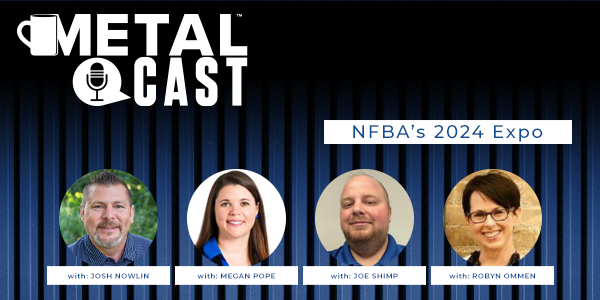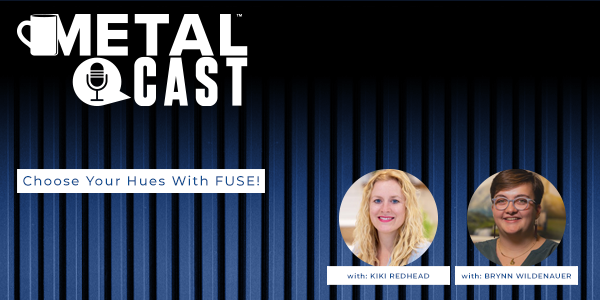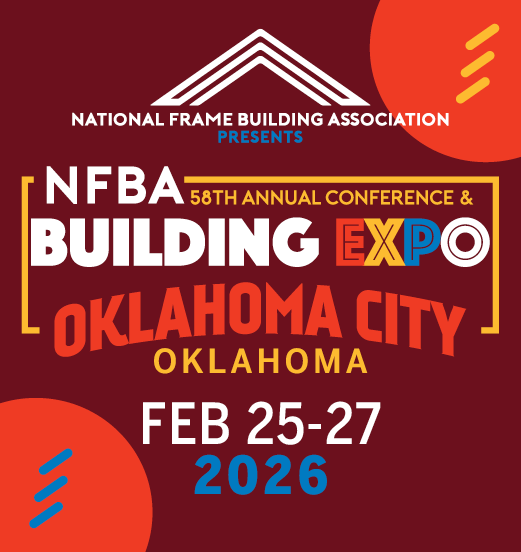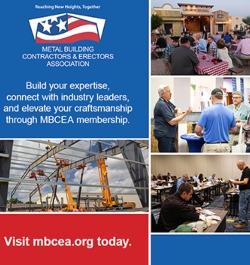UP TO THE MINUTE
Mindy Dahlquist - Preventing Liability and Tragedy With Snow Retention - PODCAST TRANSCRIPTION
September 6, 2023 at 2:24 p.m.Editor's note: The following is the transcript of a live interview with Mindy Dahlquist from TRA Snow and Sun. You can read the interview below or listen to the podcast.
Heidi J. Ellsworth: Hello, and welcome to MetalCast from MetalCoffeeShop. My name is Heidi Ellsworth. And we are here to talk about one of the most important things when it comes to metal roofing, and that is snow retention. You got to make sure that snow stays where you want it. And so we've brought in the expert in snow retention, Mindy Dahlquist from TRA Snow and Sun. So I'm going to say that again from, TRA Snow and Sun. I love Mindy and what she has to say. She's so knowledgeable. Mindy, thank you so much for being here today.
Mindy Dahlquist: Anytime, Heidi, I love joining you, I always love your energy, and I think we collaborate quite well.
Heidi J. Ellsworth: I do too, and such important great information. So let's start out why don't you go ahead and introduce yourself and tell us a little bit about TRA.
Mindy Dahlquist: Absolutely. So my name is Mindy Dahlquist. I am the business development manager at TRA Snow and Sun. I've been with them for a few years now. We are based out of American Fork, Utah, so we experience a lot of snow in surrounding areas of us. And then actually I traveled just a little bit across the country a couple of years ago and came from Ohio, so just about 2000 miles, and decided I was just going to live in Utah. And so that's what brought me to TRA Snow and Sun. And I've done a little bit of everything out here as far as snow removal and a lot of other parts that has brought me to this position.
And I just think TRA is a great company to work for and to work with. So I am more than excited to be here today.
Heidi J. Ellsworth: I love it. And when you're talking about really saving lives, you have to talk about snow retention in the mountains or anywhere where they're getting a lot of snow and ice. So let's start with that is Mindy what actually causes ice and snow to fall from the roofs and cause that danger?
Mindy Dahlquist: So there's a lot of factors that go into play when it comes to the snow actually moving on the roof, but unfortunately the thing that happens when that snow falls down is it accumulates on that roof whether you have snow retention or not. So whether you want that snow up there, it's going to be there and then eventually it would just slide off due to heat loss. It's mostly going to start at the ridge of the home since that heat rises to the highest point of the roof. But you just have lack of friction on the roof. And unfortunately with metal roofs, they are extremely slippery, so they're going to heat up a little bit easier from the backside since metal is a conductive material, and then you're going to have that water that's coming down, all those weather patterns that we unfortunately see all winter long where you think spring is coming, but it's just not there yet.
I believe this year some of the most serious incidents we saw were in the very early spring where the snow had melted already in the valleys and then those slides were just starting to happen in the mountain regions when that heat started to come through.
Heidi J. Ellsworth: Really, if you think about it in relation to an avalanche, springtime is the worst time for avalanches because everything's getting a little melty and there's water running underneath the snow, it's the exact same thing on a roof and you want to keep it there so it can melt slowly and not fall on people's heads or at least make sure it's falling where you want it to fall in that case. So when we talk about snow retention, why don't you talk about just what that is? We were just talking about right there, we like to keep the snow on our roof because it helps with the insulation. Some people just want to make sure it gets off in the right spot. So talk to us about that overall snow retention philosophy and strategies.
Mindy Dahlquist: Absolutely. So snow retention is basically holding the snow on the roof and allowing it to melt off, it does create that insulating blanket, and it also really looks nice on the roof as well, to be honest. But beyond that, it does create safe access to and from a home or building, and then it just really gives that snow a place to stop. So the snow fences that are put onto metal roofs, those are going to act more as a barrier or as a fence per se for the names specifically. But with that, that snow actually slides down to meet that fence.
So oftentimes more than one row is necessary to be able to maintain the snow on the roof, so that's why it's important to just work with whatever snow retention manufacturer you are working with to make sure that that system will be able to hold the amount of snow that you get. Because just because your neighbor down the road only has one or two rows doesn't mean that they have the same roof set up from the sheathing up that you do. So it's very important to make sure you're looking into all the factors and just putting up ample amount of retention for your roof.
Heidi J. Ellsworth: So that is so good. Don't think just what that person's doing is the same, pitch can be different, roofing materials obviously could be different. There's a lot of factors. You need a licensed contractor who's working with a great company like TRA to really make sure you get the right engineered snow retention system. And here's why, I would love for you, Mindy, to share, it's sad, but to share some of the stories that are out there and just how important this is.
Mindy Dahlquist: Definitely, yes, this is something that's very important to me, very hard to talk about sometimes, but this is something that we come across very often. Our company has joined in with many court cases. The owner, the original founder of TRA has been involved as an expert witness in many court cases involving deaths. I've personally watched body cams from police officers who have arrived at the scene after they've pulled people out of rooftop avalanches. And let me just say that's not a video that I would recommend to anyone watching. It's very, very devastating. These families go through so much knowing that their family member did not just pass peacefully. It's a long and slow situation, and that's not something you want anyone to go through. Obviously it's basically the same as an avalanche on a mountain, but oftentimes they're able to get to you faster, but that doesn't make the pain any less prevalent.
So I do want to give some examples, but with that I want to respect the families, I will not give any names or extra details. And so this year alone there was a 50-year-old man in Brighton, Utah, and something that's interesting when I talk to architects and engineers is oftentimes they believe that only children or dogs or landscape, not that that makes it okay, but they believe that those are the people that this influences and that is not the case. So a 50-year-old man in Brighton, Utah, this year and also a five-year-old girl in Durango, Colorado this year, 25-year-old man in Crested Butte, in 2019, 50-year-old man in Park City, in 2017, 73-year-old woman in Vermont in 2020, and then a 50-year-old mom and eight-year-old son in Kirkwood, California in 2018, and then a two-year-old little girl in Island Park, Idaho in 2016.
So these are just the ones that I am aware of that I just went through and wrote down so I could make sure to cite that, but this is something that happens more than we give it credit and it's something that is extremely dangerous. Oftentimes someone will know they have a problem with sliding snow. If you're putting up a extremely pitched roof with metal roofing, you know that snow's going to move at some point, and so making sure that you're considering all the options, going with a higher rib strength is pretty important, because then you're able to actually utilize snow retention in a better way.
Sometimes some of those newer panels can be a little easier to install, but can make it a little more difficult to adhere another system to it. And the same is going to go with solar panels as well, you're putting additional weight on the roof, so you need to make sure that that roof panel and that rib is able to hold it. So definitely a darker part of my job that I am glad that other people don't always have to see those details, but it is something that needs to be considered and a lot of thought and effort needs to be put into preventing this from happening to other families.
Heidi J. Ellsworth: Definitely. And when you think about it, how many times are contractors really needing to figure out how to protect their customers and protect themselves? I think what should they be doing with snow retention? I'm thinking about everything you said, right next to our house was a metal roof that did not have snow retention, it does now, and it took out the whole chimney. So there's just so many different areas of the problems. What's your advice to contractors on how to make sure that they're really protecting their customers and their companies?
Mindy Dahlquist: So protecting their customers is going to be having that educated conversation on let's give you this information, and whether you're interested or not, at least I've provided you with that information, because if you just say, "Oh, in the back of my head they do not want to spend the extra money, I am just going to give them a bare bones roof and call it a day," then you're really leaving yourself up for issues down the road for liability and other concerns. If it's a reroof and there's no architect involved, if there is an architect involved and they're just saying, "Oh, just put up one row of snow retention," and you say okay and do it without pushing back at all and getting a little more educated on that, sometimes that can lead to problems down the road.
I know lawyers are very real and make a lot of money out there. So it is something that helps you not to be involved in those lawsuits when you can show I did my due diligence, I know the information for the roofs that I'm selling, and I recommended this system to them or multiple systems, because there's so many options out there to just not saying anything because you're scared of hearing no isn't going to be beneficial for you in the long run.
Heidi J. Ellsworth: Or your customers.
Mindy Dahlquist: Absolutely not.
Heidi J. Ellsworth: It really is both. And I know you and I have talked about this before, let's talk just a little bit about building codes. There are a lot of places that do not have building codes, and then there's places that have building codes that really do not go far enough or are going to not protect it. So as a homeowner and as a contractor, that's frustrating of we're not getting the help that we need from building code officials to make sure we're doing this right, but I know TRA can help with that.
Mindy Dahlquist: Yes, so we are on a board with a few other companies where we're working for some ASTM standards on snow retention, there's just a lot of moving parts when it comes to codes and standards. And so this is going to be years and years delayed just due to specific municipalities. That area has to determine that snow [inaudible] and then they have to attempt to determine what is snow retention and how much snow retention needs to be up, where does it need to be up, there's so many factors that go into that and there's not a one size fits all answer for anyone. Even if you and your neighbors who are just a little bit lower on the mountain from you, or down the hill, down the road and they have a slightly different pitched roof or a slightly different material on the roof, their snow retention system's going to be completely different. Municipalities don't know that information. They're not going to know the strength values. So don't rely on your local building codes to have all this information yet when there's not much there for them to even reference.
Heidi J. Ellsworth: So it's really important to work with a manufacturer, to work with someone like TRA, to really understand those. So talk just a little bit about what you do when you are providing engineered snow retention for the customers.
Mindy Dahlquist: So we work directly with any form of customer, whether I work directly with architects very often, and a lot of our other team works directly with contractors, and all the way down to the homeowner themselves. So we are more than happy to answer those questions, we offer free engineered layouts so that we're able to take all of those details into consideration and make sure that we're selling you a system that's going to be strong and reliable for years for you, so it's not just something that you're having to put up year after year after year like something like a plastic racket that just becomes part of your landscape at the end of the year basically. So it's very important to make sure that you're working with the company directly, they're going to know their strength values on their systems, and they will be able to tell you more information on placement and all of those types of things.
Heidi J. Ellsworth: I want to talk a little bit about risk, because for a contractor, and we've touched on it already, but to just bring this home, there is a huge risk factor if you are installing roofs in a snow area without snow retention or without the right snow retention. Whereas I know we talked before, Mindy, that if a contractor has offered engineered snow retention and has talked to the homeowner and the architect, the building owner, whoever it is, about it and about the risks involved, that's something that contractor can say, "Okay, document them, we had that discussion." That's huge risk mitigation right there for the contractors.
Mindy Dahlquist: Absolutely. We are all out here just [inaudible] every day in every type of business anymore, that is everyone is always waiting for that quick get-rich scheme out there, and you do not want to be part of the other side of that. There's a lot of situations, one that actually comes to mind specifically when it comes to risk in an area that it's just not something you would think about, Dallas, Texas, so at the Dallas Texas Stadium, so they don't get much snow, and I actually have a pretty cute video of this, it's not cute, but there's a little bit of snow, what we would consider a skiff of snow and it slides off of their dome for the Dallas Cowboys stadium, it's game day, there are people walking in and out of the building, very small amount of snow or possible ice falls off the building, hits six people, and those six people did file a lawsuit.
Heidi J. Ellsworth: Oh my God.
Mindy Dahlquist: And so because of that, something that was interesting for us as a company is we actually got to make custom snow fences for the Mercedes-Benz Stadium, which is in Atlanta, Georgia, which also does not get much snow. But since the same management company managed both stadiums, it made more sense for them to utilize snow retention where it may not be fully necessary. Not that I'm saying Atlanta, Georgia needs snow retention everywhere, but that just shows that the risk for them was too great for them to ignore it after they've had concerns. So in areas where we're getting hundreds of pounds per square foot of snow, it's something we need to be thinking about.
Heidi J. Ellsworth: All the time. And you know what? There's the risk for your company, but there's also just that end goal of doing the right thing for your customers, protecting your customers, at least making them aware of it I think is so important. Let's bring it down to some of the tactical, but when you're looking at a metal roof, what are some of the best snow retention systems that you recommend for metal roofs?
Mindy Dahlquist: So the most common one that we have is going to be what's called a C22Z Clamp-on. So that's going to be a two bar system. It's honestly pretty much what most people go with just because they like the aesthetic of the two bar and not just having one little bar going through there. It does make it stick up a little bit more as far as, I always say, a meteor system, but I don't know that that's the right thing to say, but it does look very nice and it pulls the whole building together as far as looking very finished and well taken care of.
There are other systems out there that we provide, and there's some that go directly into structure, but as far as a clamp-on system going onto a metal standing scene panel, usually the C22Z with tube and everything going through it is going to be the most widely purchased option. And there's powder coating options. There is so many different... I think we've got over 50 colors and you can do AO66, the core 10 type of metal, you can also do copper, that's also an option as well if you just have an abundance of money sitting around that you want to continue to put copper on your roof, then there are options to go with for that as well.
Heidi J. Ellsworth: That is so cool. And they are pretty, you have to say. So when should contractors be starting the process to be talking to homeowners about installing and getting it on their roofs? How does that work?
Mindy Dahlquist: I think as early as possible is best. If you're providing a bid for a reroof, having that information. I know where I come from, I actually just went home two weeks ago, and Ohio is starting to really jump onto the metal roof train, which I think is fabulous. There's a lot of very old buildings there that need a little bit more maintenance. And it was nice to see how many metal roofs are going up out there. But it is something that needs to come up early on instead of at the end where it's, oh, we also should protect your roof from snow, let's just cut some of this extra scrap metal and fasten it down into your roof that doesn't have any penetrations currently. And just those types of things that roofers should be trying to avoid. It doesn't leave them liability in a good position at all.
It does help with that lawsuit situation and things like that of just putting something up that isn't super helpful for the problem. So I think early on is the best option. Mostly, in a reroof situation, new construction, 110%, think about it early on. I have a lot of people who tell me it's the last thing that goes onto the roof. It is, but if you're not thinking about it ahead of time and you could have changed your sheathing or something to make that much stronger and actually save you a lot of money in the long run, you probably would have done that.
Heidi J. Ellsworth: It should be part of your bid. It should be part of the original estimate and make sure with the education as you're talking to them. How do they get ahold of you? How can they purchase and get these awesome engineered systems?
Mindy Dahlquist: Absolutely. So we work with all different types of distributors currently as well, but we also sell direct. So you can always contact us at sales@trasnowandsun.com through email or just on our website, which is just www.trasnowandsun.com. Nothing crazy. And then for any educational questions, things like that, definitely reach out directly to me. You can find my information through Heidi with the MetalCoffeeShop, and they will be more than happy to get you in touch with me. And I can stop out to wherever I need to go and provide any kind of trainings.
Heidi J. Ellsworth: I love it. That's so true, you are all over the country because there's snow all over the country. Well, Mindy, thank you so much. Great as always, podcast, great information, and really a lifesaver. Thank you.
Mindy Dahlquist: Absolutely. Anytime.
Heidi J. Ellsworth: Okay. And thank all of you for listening and watching this MetalCast. Please be sure to check out the TRA Directory on MetalCoffeeShop, also on RoofersCoffeeShop, so you can get it in both places. And check out all of our MetalCasts on the MetalCoffeeShop underneath RLW, look for MetalCast, you'll find us there, you'll find us on YouTube where you should subscribe and get those notifications, and on your favorite podcast channel. Please subscribe and set those notifications so you don't miss a single episode. We'll be seeing you next time on MetalCast.
Recommended For You

MetalCast with Robyn Ommen, Megan Pope, Joe Shimp, & Josh Nowlin - NFBA's 2024 Expo - PODCAST TRANSCRIPT
Read More ...
Jon Olson – Malco Products, Metal Tools and METALCON - PODCAST TRANSCRIPTION
Read More ...
Kiki Redhead & Brynn Wildenauer - Choose Your Hues With FUSE! - PODCAST TRANSCRIPTION
Read More ...
















Comments
Leave a Reply
Have an account? Login to leave a comment!
Sign In